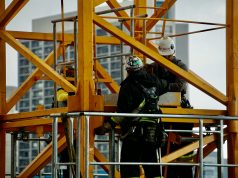Drain blockage is among the common home improvement issues that occur in newly built homes. An improper drainage system will attract pests, mould, and mildew. Exposure to mould spores may lead to allergic symptoms, such as wheezing, itching, coughing, and difficulty breathing. On the contrary, pest infestation is the main culprit for asthma and other health hazards. There are various signs of drain blockage issues:
– Slow draining water
– Raised water levels
– Gurgling sounds coming from your drains
– Unpleasant odour
Drainage issues are hazardous and might increase your home maintenance costs. Therefore, it is important to address them as soon as possible. Below are specific drainage challenges for new build homes:
1. Improper Installation
Sometimes, new homes experience drainage issues even after using high-quality materials. The core reason behind this is improper pipe installation. Poorly installed pipes will prevent dirt, mud, and grit from going through the system. To prevent this issue, consider investing in professional contractors. Drainage company in Maidstone has reputable and reliable contractors who will offer you top-notch services.
2. Cheap Materials
The quality of plumbing materials can affect the drainage system. Sewer pipes made of cheap materials break down and lead to drain blockage. Before investing in a home, evaluate the pipes’ materials to ensure they meet the standard quality. In addition, the plumbing system should function seamlessly. If you are building a new house, consider buying the right materials.
3. Wrong Slope Measurement
During construction, incompetent contractors might fail to measure the slope properly. Gradient piping misalignment increases the risk of drainage blockages. On the other hand, a correct slope will let the running water flow smoothly without any obstruction. This will reduce the chances of clogged sewers and pipes. Based on research, the standard slope measurement is 1/4 inch per foot. It may differ depending on the construction terrain of the house.
4. Debris from the Construction Site
Some debris from the construction site will find its way to your pipes and sewers. For instance, pieces of pebbles, bricks, and mortars can get into your plumbing system during the installation process. These pollutants will compromise your plumbing system, making it nonfunctional in the future. Inexperienced contractors might overlook this incident. Therefore, ensure you invest in the right builders. Professionals will use high-tech equipment to ensure everything is running smoothly.
5. Undersized Pipes
It is very important to determine the right plumbing materials that suit your house. According to research, undersized pipes are among the root causes of drain blockage. The standard size for pipes is four (4) inches in diameter. Some contractors might opt to buy pipes with a smaller diameter to reduce the cost. This might cost you more maintenance costs in the long run.
6. Untested Systems
Most of the plumbing issues that occur in newly built homes are a consequence of untested systems. Mistakes with the drainage system may only be seen once the building is complete.
Conclusion
Repairing and replacing water pipes or the sewer is quite expensive. Therefore, it is important to hire professional contractors with sufficient knowledge in this industry.














